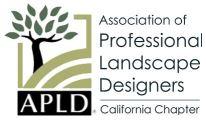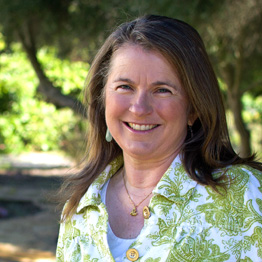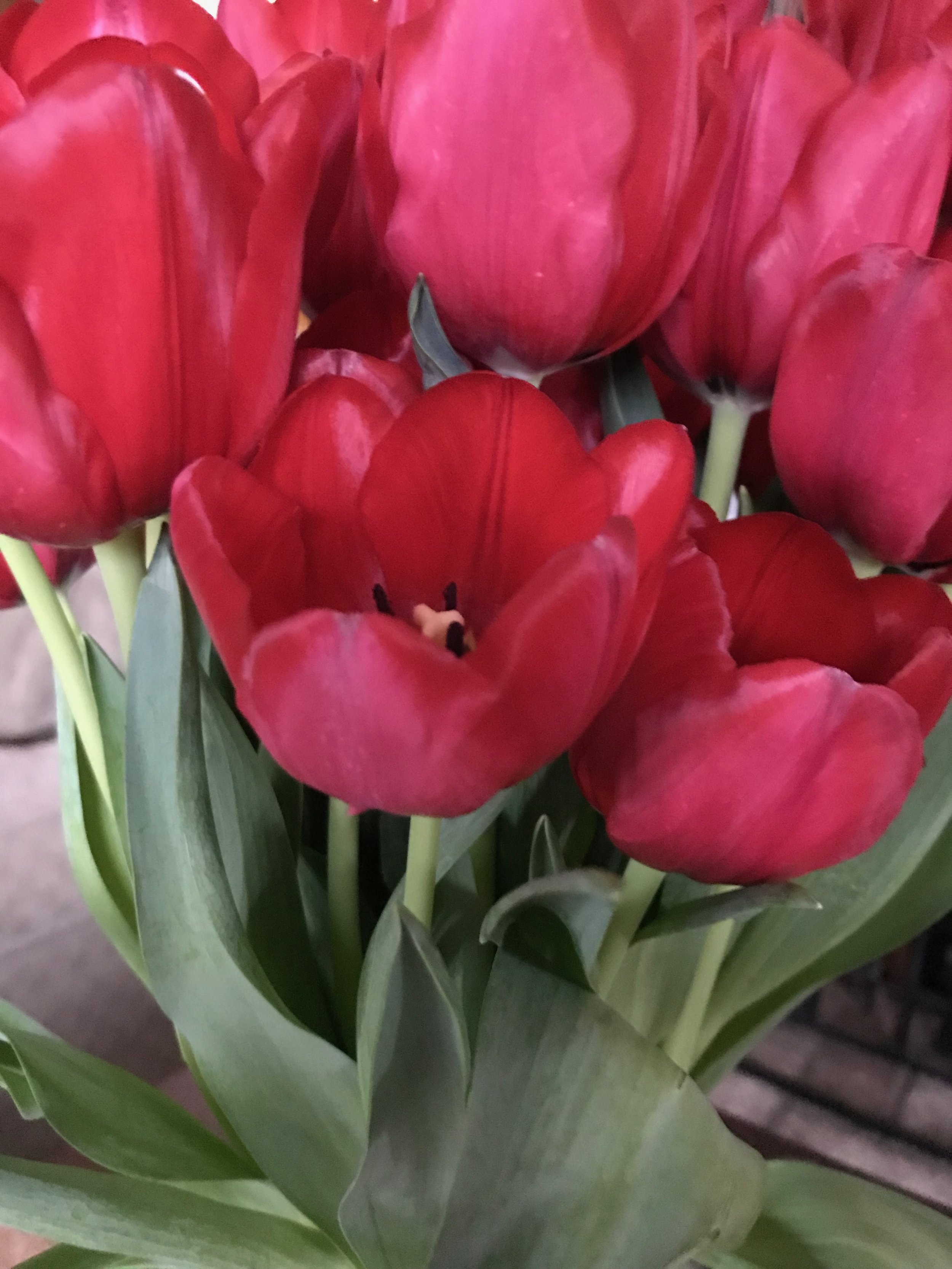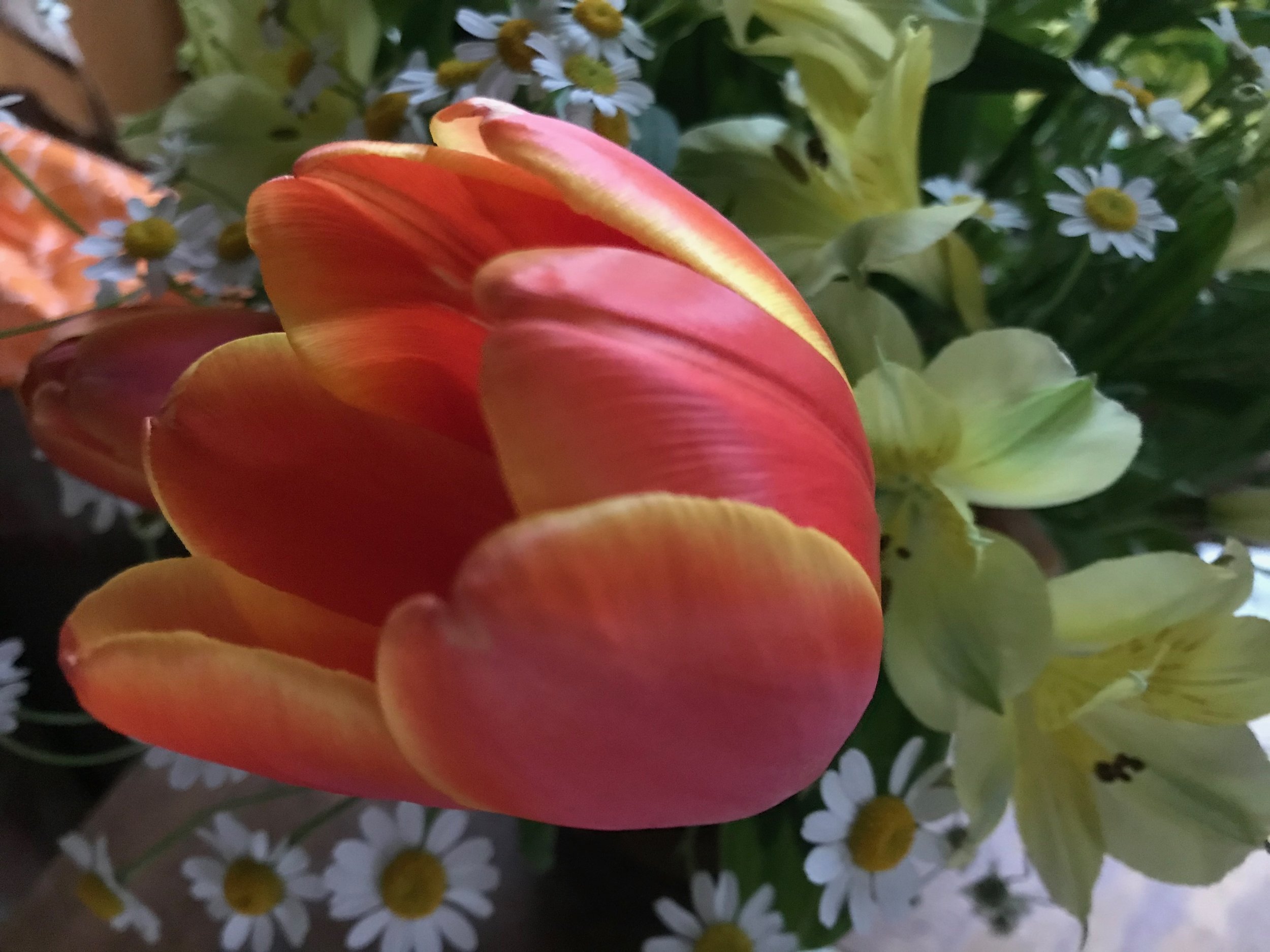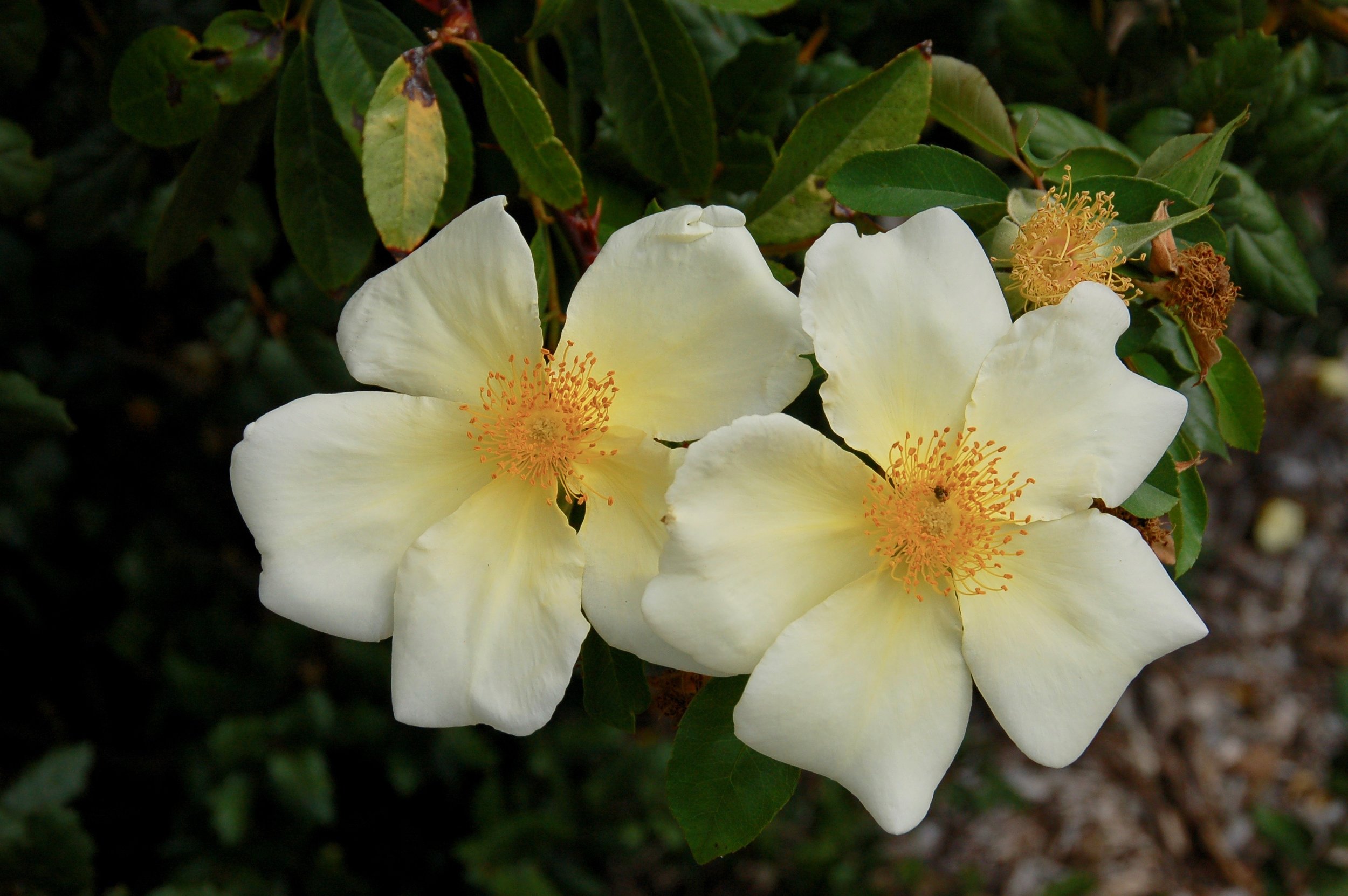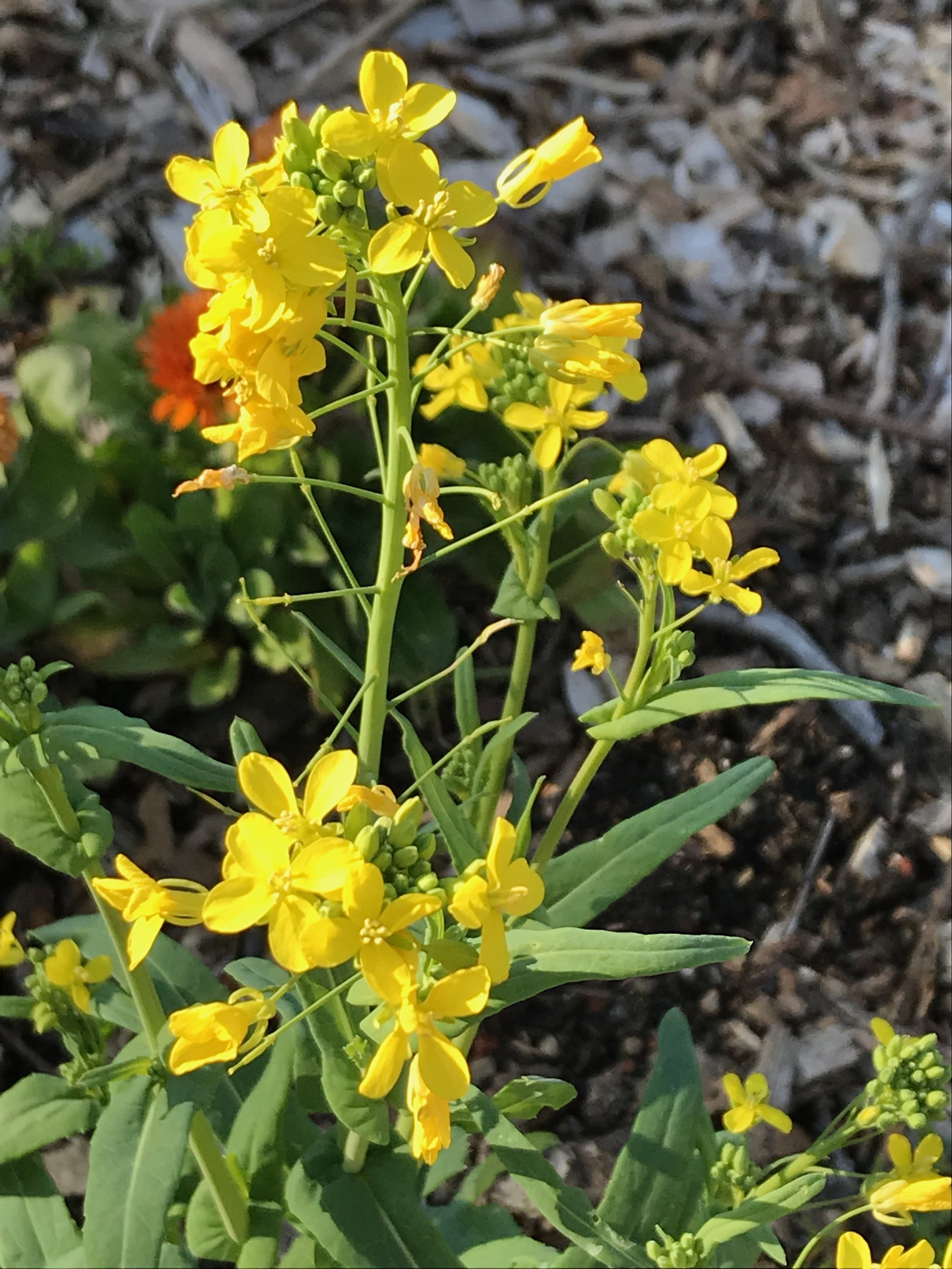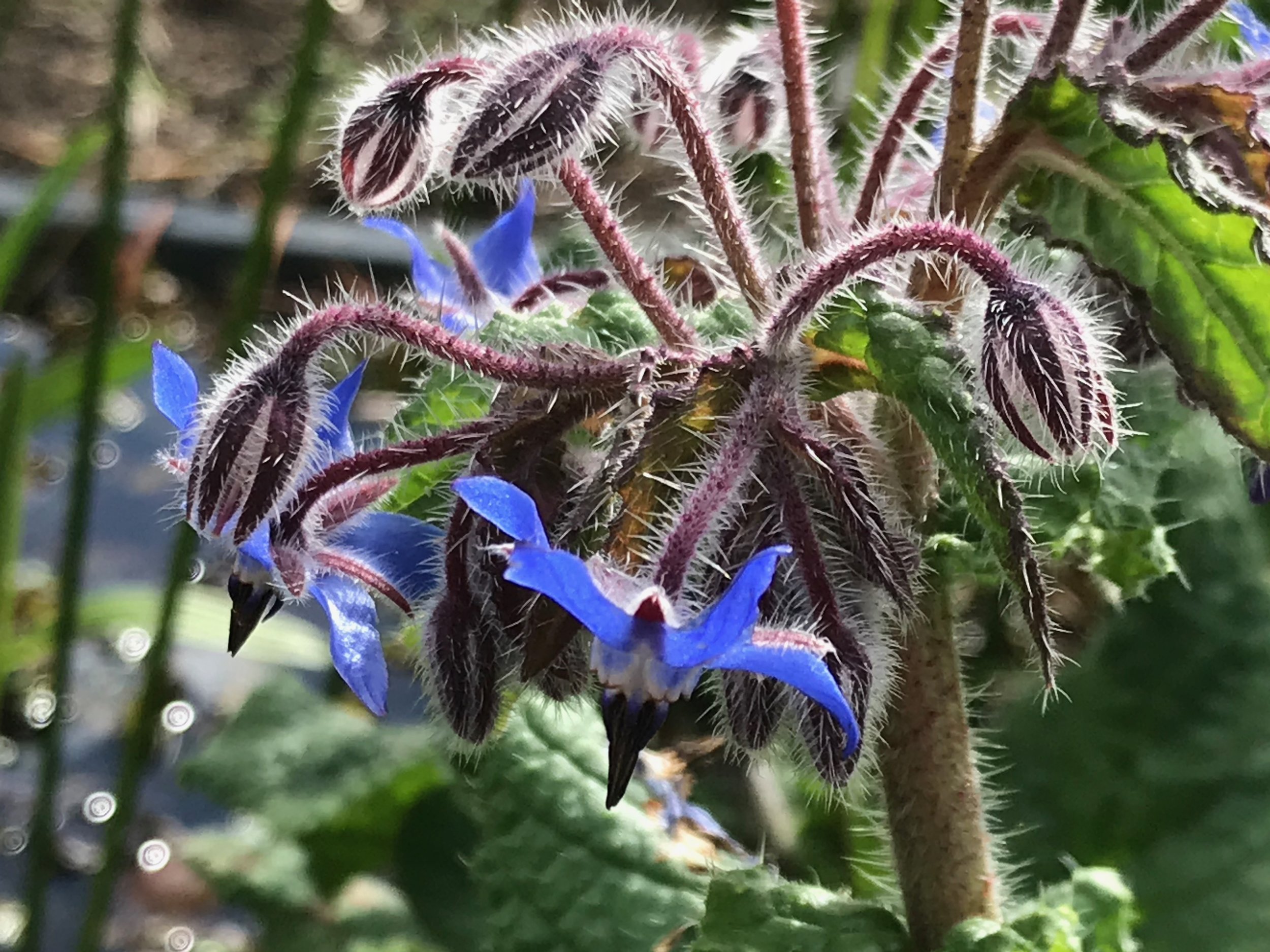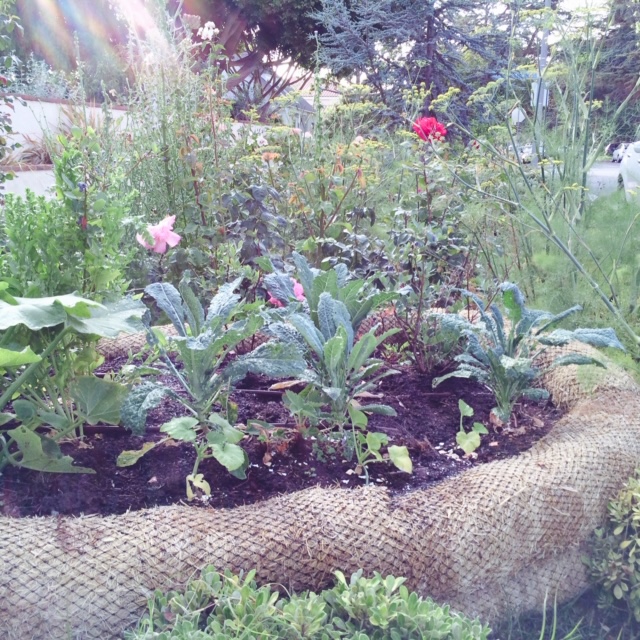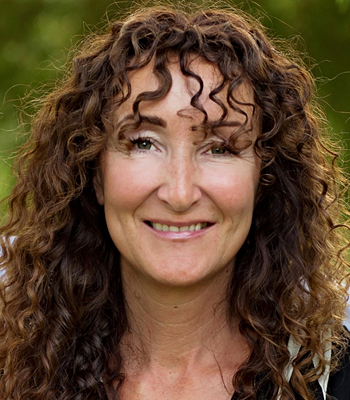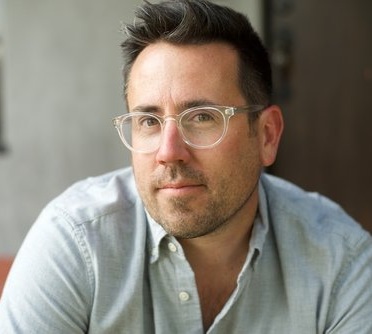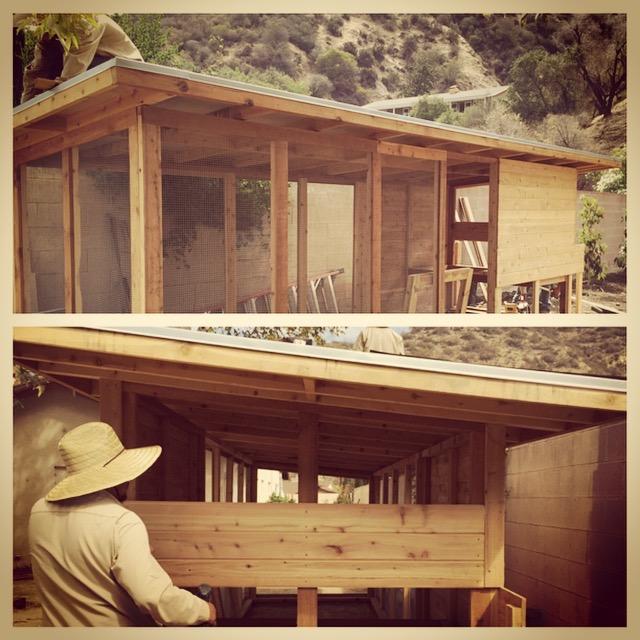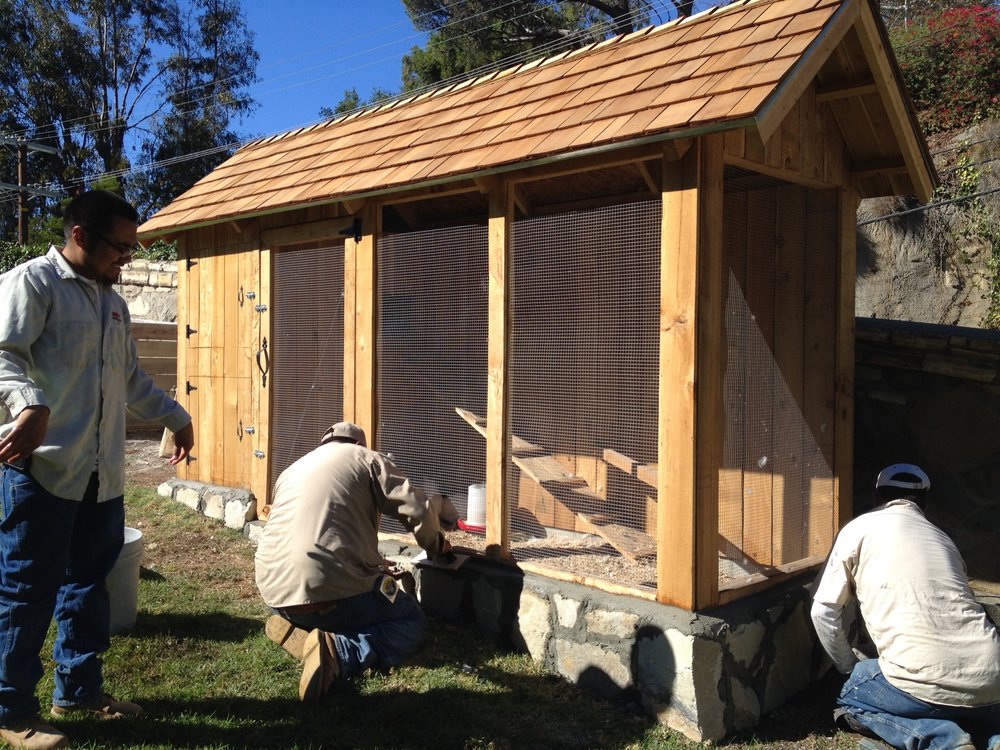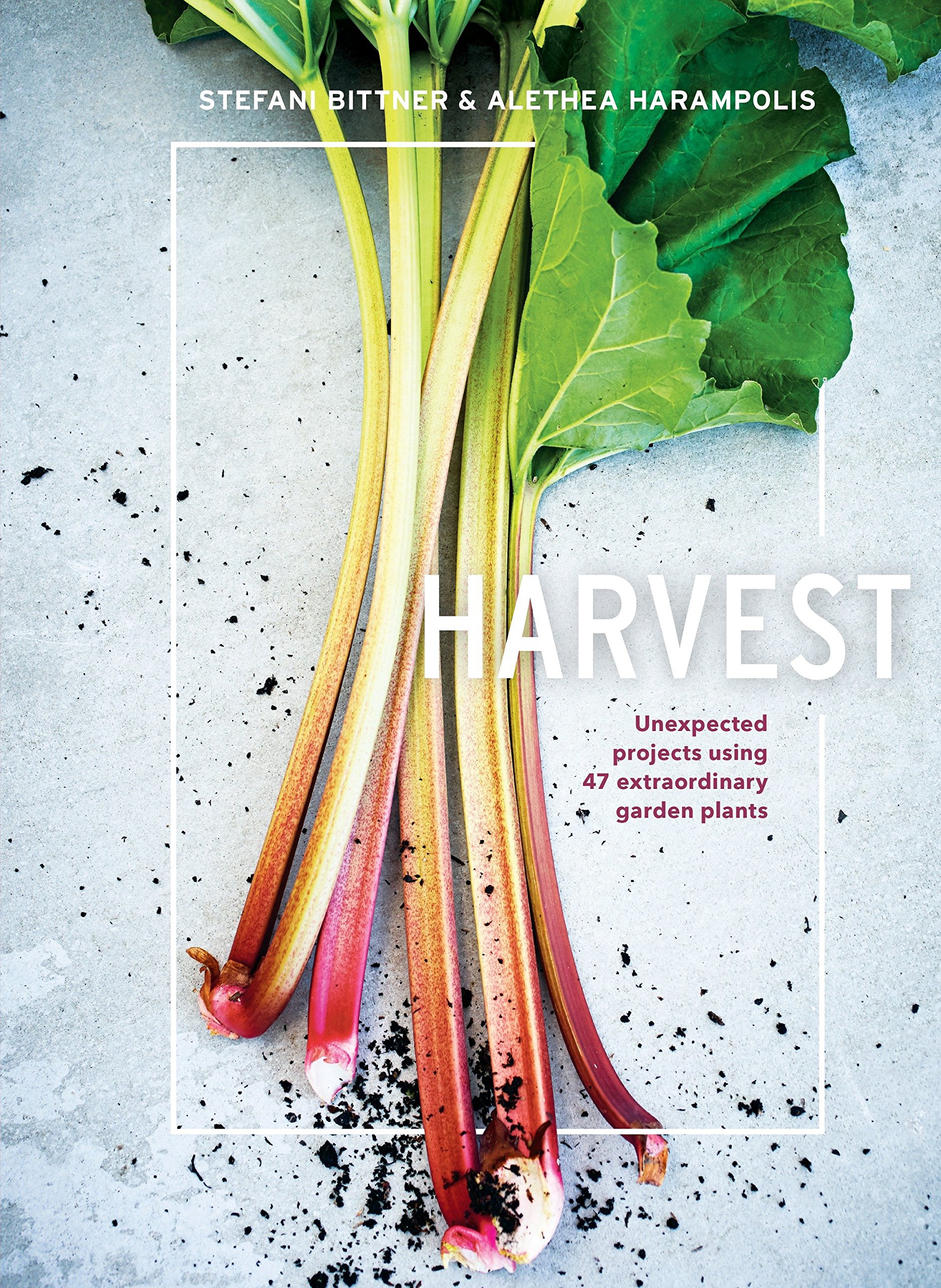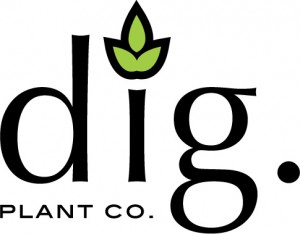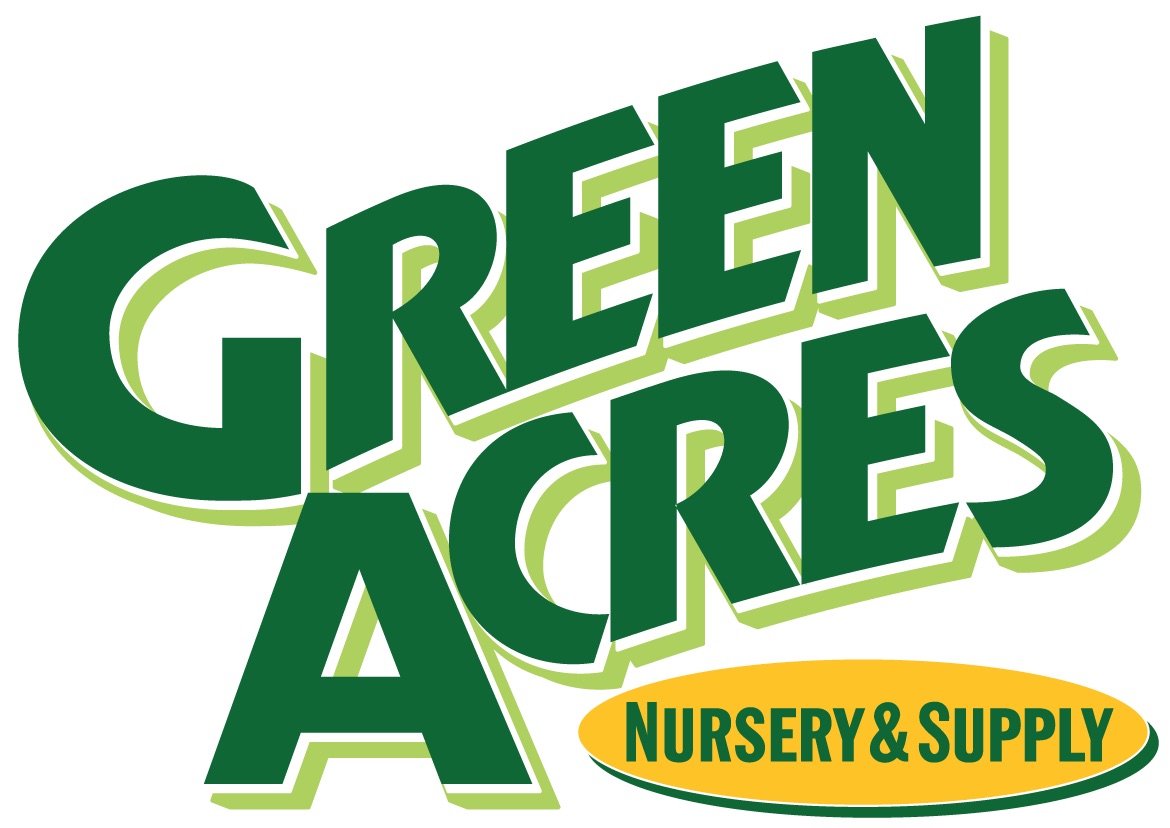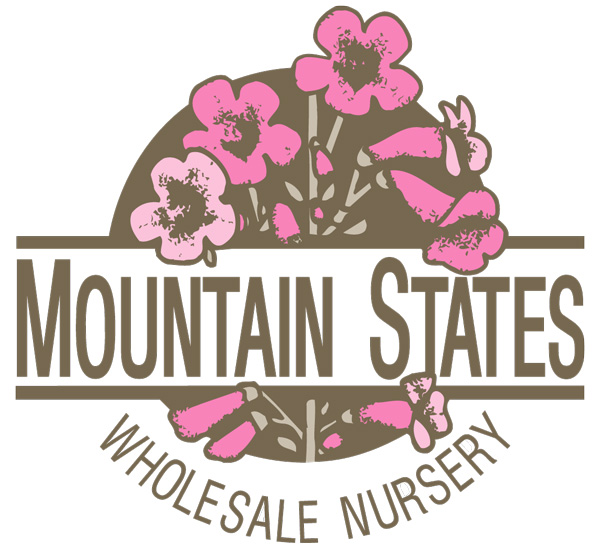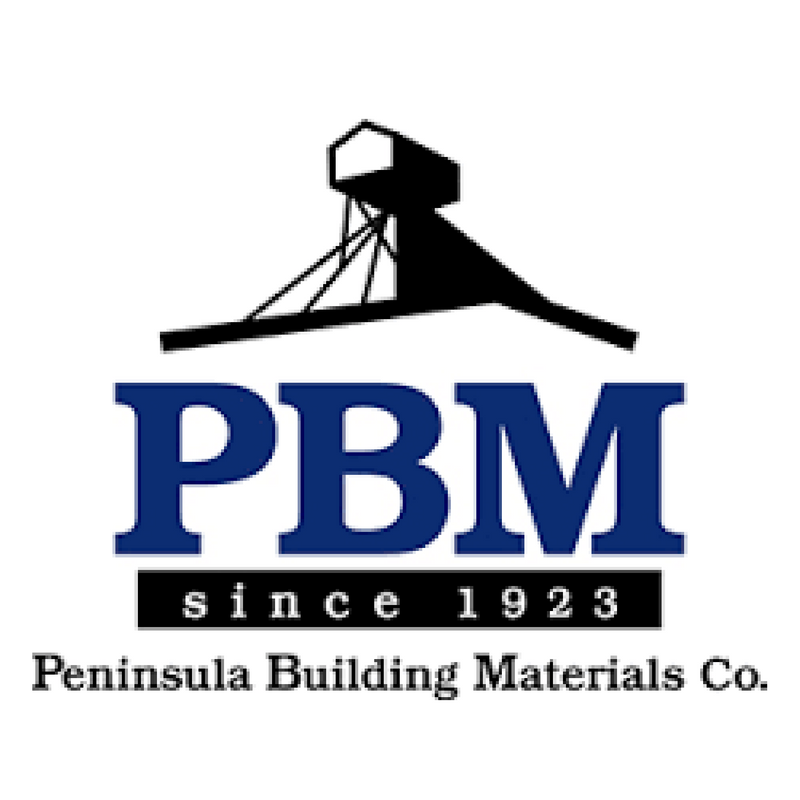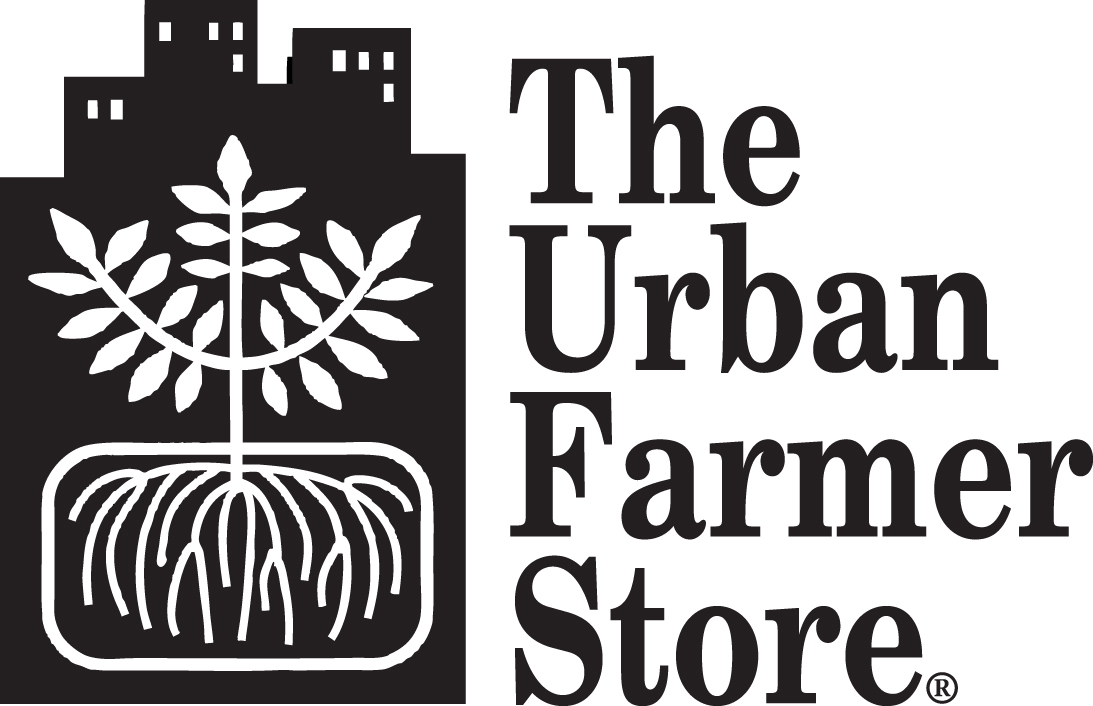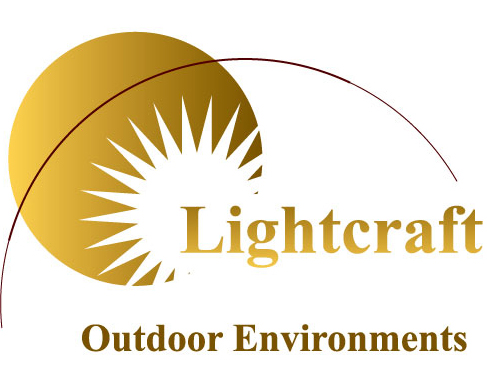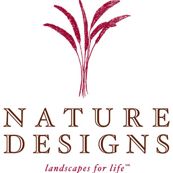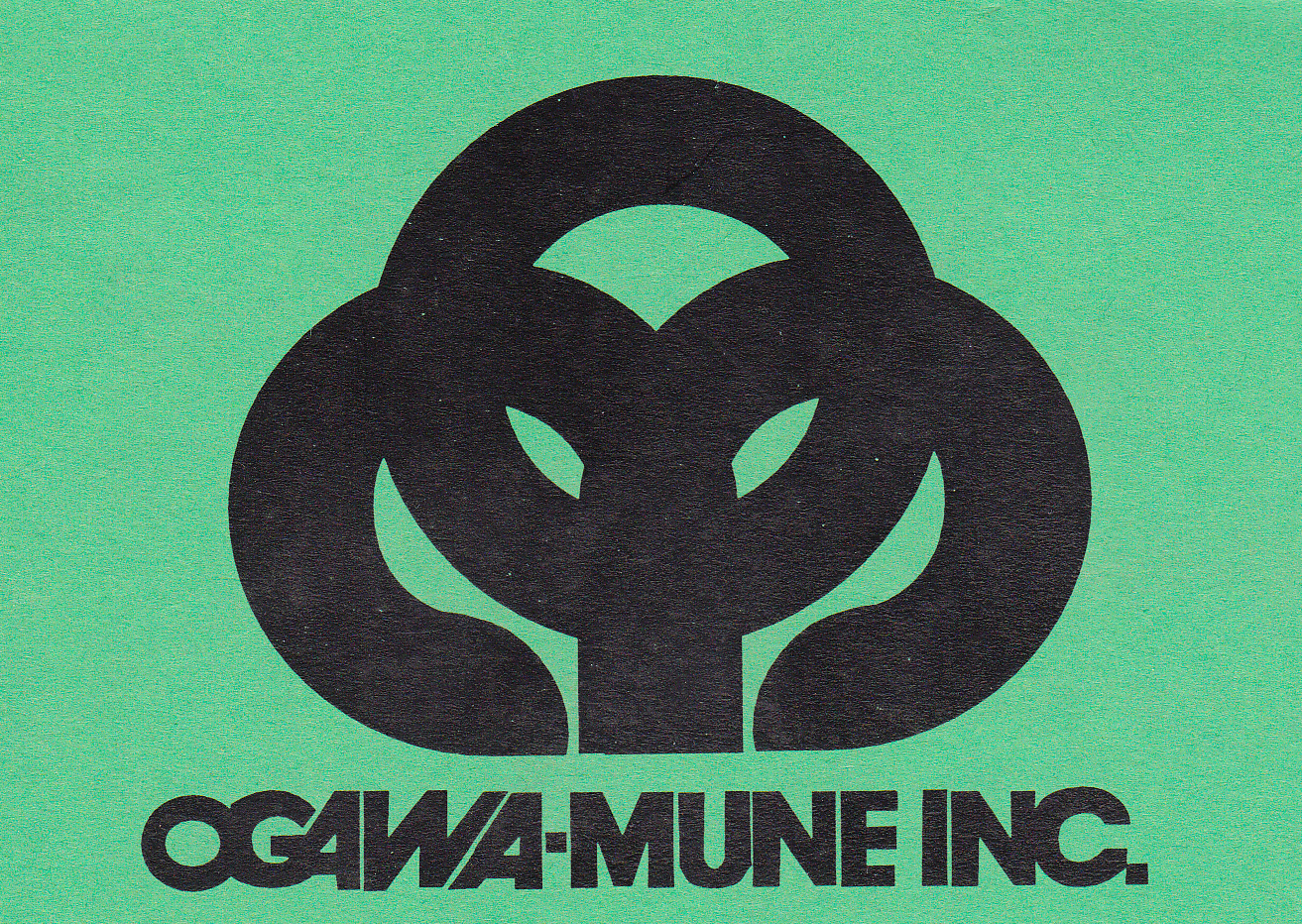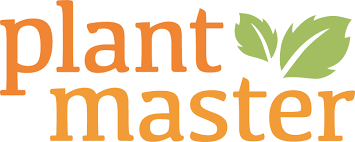Photo courtesy of Jude Parkinson-Morgan, Jude Parkinson-Morgan Photography.
Designing today’s gardens
FROM THE CHAPTER PRESIDENT
Francesca Corra, APLD
Happy Spring Everyone! What a spring it is in California after this incredibly wet winter! Plants are absolutely bursting at the seams in their delirium to flower. The coming of sunny days allows us to finally get back into our gardens.
It is time to get your hands into that soil and plant your warm weather vegetable garden! I’m extremely ambitious this year after attending a great vegetable gardening workshop last weekend; I have never had enough sun in my garden to be very successful with most vegetables, so always feel a bit lacking in that area. I was inspired and came away with a flat of newly planted seeds from this workshop, which will grow into leeks, red chard, bunching onions, basil, and spinach.
You will see in this newsletter that we have many designers with a lot of expertise to share. I have been looking forward to this issue!
Spring is also the time we visit others’ gardens. Bring on the garden tours! How serendipitous that the theme of the fourth annual Garden Tour in the Greater Los Angeles district is “S.E.E.” - Succulents, Edibles and Ethical garden practices. There will be, among other fabulous sights to behold, some beautiful edible gardens. Please get your tickets if you have not already! For those APLD members who are reading this from afar, come visit! There are APLD members in Los Angeles with rooms in their homes to put you up.
Spring also brings a new lineup of sponsors for 2019. We have many loyal, returning sponsors as well as a few new ones. As designers, we are in a position to specify materials and source for plants. Please give our sponsors priority when making those choices. Give them your support in return for theirs. This year we have a new Platinum sponsor, Bay Scenery Inc. We welcome them aboard and hope this is the beginning of a beautiful relationship!
Tickets are on sale for the APLD International Design Conference which is being held in Seattle this year, July 25 to 29. This is an easy flight up the coast for us, so get your tickets because I know for a fact that the Seattle folks have a super conference planned for us this year!
We all have our strengths and weaknesses, but we all have something to share. Please consider getting involved with an APLD board. It can be as simple as reaching out to your local district leadership to help out at a single event. Maybe help set up or clean up to avoid traffic, or think about how you or someone you nominate could get involved at the district or chapter leadership level.
I leave you with this thought...
“Gardening is cheaper than therapy, and you get tomatoes” –Unknown
Ciao!
Francesca
CONTENTS
Simply scroll down to read the articles.
You may also click on the section titles below.
Letter from the Chapter President
Francesca Corra, APLD
The Designer's Toolbox
PLANT SPOTLIGHT:
Hops by Joan Bolton
Pretty Enough to Eat: Edible Flowers by Patricia St John, FAPLD
TOOLS AND TIPS:
The Artful Edible Garden by Suzanne Arca, FAPLD
Thumbnail Designs: Artful Details
Arleen Ferrara–Wattle raised beds
Deborah Kuchar–Let in the light
Sacha McCrae–Foodmap containers
Christine Duffy–Accessible edibles
Mary Fisher–Herb-aceous roof
Russell Wightman–Box Farm raised bed hardware
Fleur Nooyen–Kayu Batu cubes
Hugelkultur and its Possibilities by Leigh Adams & Shawn Maestretti
Espaliers: Age Old Art with Modern Application by Ed Laivo
Custom Chicken Coops by Russell Wightman
BOOK REVIEW: Edible Books reviewed by Patricia St. John, FAPLD
Member Highlights
Edible Landscapes Around the State
1. Hillside Vineyard in Bel-Air by Nicholas Walker, FAPLD
2. A Juicing Garden in Carlsbad by Jackie Seidman
3. An Acre of Edibles in Fairbanks Ranch by Jackie Seidman
4. Family Terrace in Carlsbad by Ryan Prange
5. Edible Front Yard in Encinitas by Ryan Prange
6. Modern Farmhouse in Huntington by Sacha McCrae
FOCUS ON COLLABORATION:
The Designer and the Gardener – project profile of Joel Lictenwalter & Jacky Surber of Urbiflora, Kate Stickley & Orchard Keepers
Community Connections: Eco Urban Gardens Farm to School Program by Kristan Brown
News from the Districts
What’s Happening with APLD Around California
Our Sponsors
Devil Mountain Edible Plant Picks
Welcome New Members
Upcoming Events
Contributors
Call For Submissions
Photo courtesy of Jude Parkinson-Morgan, Jude Parkinson-Morgan Photography.
DESIGNER PLANT PICKS:
GROWING HOPS: TIME FOR BEER
Fresh from the vine is not a phrase usually associated with home-brewed beer. But grow your own hops, and you can claim just that.
In the garden, hops are fast-growing, perennial vines that can soar 20 feet tall in a flash. They're also exceedingly deciduous, dying to the ground and vanishing each winter. But in late summer or early fall, their female, cone-shaped flowers grow plump with lupulin—yellow, pollen-like granules—that preserve and add aroma and flavor to beer. The lime-green cones look similar to ornamental oregano and are quite pretty, even if you never harvest them.
by Joan Bolton
Santa Barbara Garden Design
Goleta, CA
Photo courtesy of Joan Bolton, sourced from iStock.com/tfoxfoto.
Pretty Enough to Eat: Edible Flowers
by Patricia St. John, FAPLD
St. John Landscapes, Berkeley, CA
How festive and fun to use edible flowers in dishes. There are many more edible flowers and ways to use them than we imagine.
Of course the ones that are frequently mentioned are nasturtiums, which I use for canapés with toasted thick crusted bread, seasoned cream cheese and top with nasturtiums, borage flowers, violas and snips of herbs. I use calendula flower petals and blue and gold violas to top an otherwise pedestrian tossed salad and sprinkled on cooked rice pilaf.
And as soon as summer comes around, I use rose petals in syrups and sorbets. Probably the most recognizable ‘herb’ for use in my culinary adventures is lavender. It finds its way in lavender cookies, lavender shortbreads, and lavender frosting on chocolate mini-cupcakes.
Actually all the herbs flowers are edible—what a bonus!
Photos courtesy of Patricia St. John.
TOOLS AND TIPS:
The Artful Edible Garden
by Suzanne Arca, FAPLD
Arca Design Group Albany, CA
Many of us caught the edible garden craze a few years back, but some of us may have found that a farm-to-table garden isn’t always the most aesthetically appealing scene. This doesn’t have to be the case. Using edibles in landscape design can increase the health and economic benefits we derive from our gardens, and can be done in such a way as to increase a garden’s visual appeal. Thoughtfully incorporating decorative containers, plant forms, and hardscape structures, as well as blending edibles with ornamentals are ways to enhance the ornamental garden. You are still able to reap the many benefits of growing your own food.
Although the traditional kitchen garden, potager, or parterre has its own kind of traditional beauty, that beauty may or may not jive with the aesthetic of your home or existing garden. Is your home and landscape modern with clean lines and minimal plant materials? Consider swapping out the traditional wood planter boxes for corten or stainless steel in a variety of shapes and shades. Food-safe options are available for these. Arranging your plantings in carefully chosen blocks of contrasting color and texture can also achieve a beautifully clean, minimalist look. Do you have a Mediterranean villa theme? Consider planting your favorite herbs, vegetables, or fruits in beautiful, deep ceramic pots arranged in groups throughout the garden.
Photo courtesy of Suzanne Arca.
Thumbnail Designs: Artful Details
By Arleen Ferrara
Satori Garden Design
Santa Monica, CA
WATTLES FOR VEGGIES
First, I must give my mentor and friend Marilee Kuhlman full credit for this one. I was meeting with her and brainstorming for a client and she mentioned how she tested out places on her property for future edible beds by using straw wattles. Wattles, what?! My ears perked up because I had just about thrown in the towel trying to grow edibles in my parkway. I had serious compaction and heavy clay, but I didn’t want to build a rectilinear structure in my parkway in order to hold good soil. The wattle was the answer because I was able to tuck in two kidney shaped raised beds surrounding my roses and it actually looks pretty darn good. The wattles have become a neighborhood “icebreaker” as people walk by. Best of all, straw wattles are inexpensive, about $24 for 25 feet of wattle. I stacked one atop the other and drove down rebar in a few places to secure it. The wattle will slowly drop in height as it decomposes. When it needs replacing, simply cut the netting and compost the straw. Voila!
Deborah Kuchar
Green Alchemy
Oakland, CA
EDIBLES IN A NARROW, SHADY SIDE YARD
Deborah found a clever solution for getting more light into a narrow side yard in this Oakland garden. She designed narrow raised beds to grow veggies and make use of reflected light off the stucco along the house. She also designed a new fence with a lower height and alternated the fence boards with an opaque plastic that allows light through.
Photos courtesy of Deborah Kuchar.
Before.
Sacha McCrae
Living Gardens Landscape Design
San Clemente, CA
FOODMAP CONTAINERS
Photo courtesy of Sacha McCrae.
Sacha’s client turned her onto these unusual planters—reminiscent of baby cribs—and she planted them with edibles.
These containers are designed to help people grow food at home without taking up too much space. The contoured form keeps plants from being damaged by sitting water, but also has a central reservoir to keep the soil moist longer. The Foodmap Container is on wheels so it can be easily moved to the best growing space as weather and sunlight conditions change They are fabricated in Los Angeles County using 100% FDA Approved food grade Recycled HDPE plastic and is 100% recyclable.
by Christine Duffy
Perennial Design
Huntington Beach, CA
ACCESSIBLE EDIBLES
Photos courtesy of Christine Duffy.
by Mary Fisher, FAPLD
Mary Fisher Garden Design
Alameda, CA
HERB-ACEOUS ROOF
The client wanted two things: an herb garden near the outdoor kitchen and a place to hide the trash bins from view. Solution: A trash bin shed with a green roof that slopes toward the food prep area. We refresh the herbs every couple of years to keep it productive and attractive.
Photos courtesy of Mary Fisher.
G Russell Wightman
Russell Wightman Design
Monrovia, CA
BOX FARM
Created for L.A. Farm Hands (LAFH), Box Farms simplify the process of starting your own raised bed vegetable garden. Marine grade stainless steel hardware and powder coated steel come together in a durable and stylish solution to the raised bed vegetable garden. Contact Russell with inquiries regarding the cost and set-up of a box farm.
by Fleur Nooyen
Fleur Nooyen and Associates, LLC
Los Angeles
KAYU BATU CUBES
I designed these smaller vegetable boxes with wheels so the client can change the location according to the seasonal sun and shade patterns on her patio.
The wood species used is Kayu batu, also known as Red Balau. The planters were constructed by Marco de la Peza, a woodworker who has contributed his expertise to several of our previous projects.
Hugelkultur and its possibilities
by Leigh Adams and Shawn Maestretti
Leigh Adams
Interpretive Horticulturist
Los Angeles County Arboretum
As landscape professionals in the age of climate change, we have access to ways we can impact the vitality of our surroundings. Prioritizing water, biodiversity and carbon will make it so a significant planetary shift can occur. Here is a centuries-old practice to consider if it’s feasible in your project(s):
Hugelkultur (noun - German - translates to "mound culture") is a horticultural technique where mounds constructed of woody material and other compostable biomass are used as raised planting beds. Practiced in Germany and Eastern European societies for hundreds of years, this technique is being revitalized as an important sustainable solution in modern regenerative gardens. It is essentially a replication of natural processes in a forested area.
Regenerative Benefits of Hugelkultur:
Sequesters carbon on site by burying debris and woody material in the ground
Retains moisture on site through rainwater capture and thermal mass
Improves soil health due to an increase of nutrients from the decaying wood and the subsequent increase of mycorrhizal fungi and other organisms in the soil food web
Landforming not only helps to slow and allow water to infiltrate, but creates an opportunity for natural screening and orchestrating experiences in the garden.
And so much more….
ESPALIERS: Age Old Art with Modern Application
by Ed Laivo
‘Ed’Able Solutions
Photo courtesy of Mary Fisher.
There are many challenges to the future of home growing fruit trees. The reasons have nothing to do with the desire or demand; both are high. Today most all of the novelty varieties of fruit are grown by the home gardener. With lots sizes getting smaller, the cost of water going up and the introduction of a new pest or disease almost yearly, it is no wonder that the desire to grow your own fruit in the future could be in jeopardy.
Espaliering fruit trees traces back to ancient Rome. Developing slowing through the centuries it gradually becomes the art form that we know today. But during the Roman times, espalier was not applied as an art form but rather a vertical pruning application that allowed for more fruit trees to be grown in less space inside walled gardens
Today we are faced with a number of challenges to the future home growing of fruit trees. Space, of course, is a primary concern along with the cost of water, but pests and disease controls may be the biggest concern of all. Espaliered fruit trees in the home garden may offer the best advantage going forward to address all of these concerns.
Custom Chicken Coops
G Russell Wightman
Russell Wightman Design
Monrovia, CA
Designed with both human and chicken in mind, custom chicken coops are a great way to make a statement or complement a landscape. Custom coops are built with the needs of humans as well as the need of the feathered members of their family. Consider a custom coop “Haute cluckture.”
Russell works with local craftsmen and contractors to price, build, and install custom coops.
Click images to expand.
BOOK REVIEWS:
reviews of Edible BookS
by Patricia St. John, FAPLD
St. John Landscapes, Berkeley, CA
My favorite edible landscaping book of all time is Rosalind Creasy’s seminal book, Edible Landscaping, published in 2010 by Counterpoint Press, Berkeley, CA. From the soil to the design basics for large and small spaces she covers everything about designing an edible garden. Creasy also covers all the herbs, vegetables, fruits, nuts, and berries that we would ever think to grow. Every time I’m suggesting plants for the gardens I’m designing I refer to her encyclopedia. Her book is also our text for the Edible Landscaping class at Merritt College in Oakland.
Stefani Bittner and Alethea Harampolis’ book Harvest is more current; this 2017 Ten Speed Press (Berkeley, CA) book focuses on edible garden plants. They take a contemporary look at ‘unexpected projects using 47 extraordinary garden plants’. Addressing homeowners (and designers) in their introduction, they express the aim of the book, “... A garden can benefit and enrich your life in so many ways. This means growing edible plants that provide flowers, fruits, and herbs for use in the kitchen as well as throughout your home in beautiful arrangements. And just because a garden is beautiful doesn’t mean it cannot also be useful.” This philosophy has opened up a new way of looking at ‘edible landscapes’ as an integral part of the whole (edible and non-edible) garden, with bounty harvestable year round.
Another great book is Edible Landscaping with a Permaculture Twist by Michael Judd and distributed by Chelsea Green Publishing. The subtitle of this 2013 book says it all: “How to Have Your Yard and Eat it Too”. I love the premise and practice of permaculture, but I often design small residential gardens for families who expect a more formal, ordered garden opposed to a total adherence to permaculture practices. This book strikes a happy balance. Edible Landscaping with a Permaculture Twist is an instructive resource for, as Judd explains in his introduction, “... designs (that) can be easily grafted to the micro-habits of the urban landscape, scaled up to the acreage or homesteads, or adapted to already flourishing landscapes.” Designs include herb spirals; rainwater harvesting, swales and rain gardens; Fungi!! growing specialty mushrooms; food forests; uncommon fruits; Hugelkultur, mounds of fertility, and earth ovens. I’ve incorporated many of these in my landscapes, and it’s nice to know there is a clear, concise source for all these designs—as Judd invites, “It’s a book to be carried out into the landscape...”
Photo courtesy of Jude Parkinson-Morgan, Jude Parkinson-Morgan Photography.
Edible Landscapes around the State
Click HERE to view this article in full.
HILLSIDE VINEYARD IN BEL-AIR by Nicholas Walker, FAPLD
The homeowner was a self proclaimed francophile who wanted to have his own boutique vineyard, planted and operated in the classic Provençal manner. This approach meant being highly conscientious of the soil conditions, starting the vines from bare rootstock, not training them along any wires, and being meticulous about the biodynamic approach to nurturing the vines.
Maguire Cabernet vineyard. Photo courtesy of Nicholas Walker.
Custom raised beds. Photo courtesy of Jackie Seidman.
A JUICING GARDEN IN CARLSBAD by Jackie Seidman
My client is a busy executive who wants a healthy lifestyle but does not have much time for cooking. She does however love to have fresh juice everyday so we came up with the idea of a “Juicing Garden”.
I have planted many vegetables, greens and herbs that will provide ample nutrients for a morning glass of juice.
These raised beds are right outside the patio which makes them so convenient to harvest.
ONE ACRE OF EDIBLES IN FAIRBANKS RANCH by Jackie Seidman
This 1 acre property has edibles tucked in every corner. It is the perfect example of growing vegetables and herbs in raised beds and in the traditional landscape as well. There is always something to harvest.
Photo courtesy of Jackie Seidman.
Photo courtesy of Falling Waters Landscape Inc.
TERRACED FAMILY GARDEN IN CARLSBAD by Ryan Prange
This project was a full house and landscape renovation. We were brought in as the landscape designer and contractor to blend the proposed farmhouse style of the architecture with the landscape. A few ways we did this was through our hard and soft material choices. Brick, decomposed granite, board-formed concrete, and hints of wood created a soft/natural palate that contrasted with the rich foliage surrounding it.
EDIBLE FRONT YARD IN ENCINITAS by Ryan Prange
This project is an interesting development of highly customizable estate homes. The idea is that each home-site will have a 'Mainhouse' and then an ancillary unit for family, office, pool-house, in-law suite, etc. Past clients purchased a home and brought FWLI in to renovate the front yard landscape. We created a series of manageable vegetable boxes set between a flagstone patio and a gently sloping orchard filled with grapes, apples, plums and other assorted espaliered fruit trees.
Photo courtesy of Falling Waters Landscape Inc.
Photo courtesy of Sacha McCrae.
MODERN FARMHOUSE IN HUNTINGTON by Sacha McCrae
These lovely clients wanted a clean and modern farmhouse style garden to be cohesive with the architecture of their home. They were also looking for edibles and an additional seating area with a fire pit.
FOCUS ON COLLABORATION:
The Designer and Gardener
Below we feature two gardens designed by APLD members Joel Lichtenwalter and Kate Stickley, who both collaborated with edible experts Jacky Surber of Urbiflora and the folks at Orchard Keepers.
Community Connections:
Eco Urban Gardens’ Farm to School Program
by Kristan Browne
Attriniti Consulting
Pasadena, CA
Photo courtesy of Kristan Browne.
Eco Urban Gardens of Los Angeles is an educational non-profit serving local communities in the San Gabriel Valley and Los Angeles area. The agency is dedicated to education on nutrition and environmental regeneration through their Farm to School program. The Farm to School classes are taught during school hours as an elective, with an afterschool garden club, and weekend community workshops. Students learn to grow fruits, veggies and build an urban green space supporting regenerative agriculture. Through hands-on learning, the program teaches a holistic approach to sustainability connecting health, social justice, and environmental restoration.
In 2017, Eco Urban Gardens partnered with City of Hope and built an urban farm with over 25 raised beds, installed fruits trees, and built an outdoor kitchen to prepare healthy meals. This initiative led to the next phase of creating a Regenerative Learning Garden, which is sponsored by US Green Building Council-LA 2019 Legacy grant. In conjunction with the El Monte Union High School District, the garden will feature California a native wildflower meadow, amphitheater, green-wall, foraging knoll, living labyrinth, bioswale, walking paths, Ecolab and as the centerpiece, a coast live oak tree. An open house event is planned for September 21st, 2019 to showcase all the new installations and present the next phase—the Farm Lab. Please visit www.ecourbangardens.org for more information about volunteer opportunities and to meet the dynamic team of Eco Urban Gardens.
Photo courtesy of Jude Parkinson-Morgan, Jude Parkinson-Morgan Photography.
News and Events from the APLD Bay Area District
Upcoming Events:
APLD Bay Area Designer Forum
Designing Hell Strips
A roundtable discussion about the challenges of designing, installing and maintaining plantings in those narrow spaces between sidewalks and streets.
Tuesday, April 9, 2019 from 4-6pm
at the Lafayette Veterans Memorial Building
More Info Here
Click to zoom.
APLD Bay Area Designer Spotlight
The Designer's Space: A Private Tour of John Black's Garden
Garden designer and APLD member John Black opens up his home garden and discusses his personal landscape journey.
Wednesday, April 24, 2019 from 3-5pm
at 2140 Bowdoin Street, Palo Alto, CA
More Info Here
Click to zoom.
APLD Bay Area Speaker Series
Financial Issues for Landscape Designers with David Harlow, CPA/PFS
Learn about the latest tax changes, accounting and retirement planning for self-employed landscape designers with CPA David Harlow. 1.5 APLD CEUs.
Tuesday, May 14 from 4-6pm
at Veteran’s Memorial Building, Lafayette
More Info Here
Click to zoom.
APLD Bay Area Speaker Series
Irrigation Update 2019 with Andrew Bolt
Irrigation expert Andrew Bolt of Architectural Solutions in Modesto will walk us through the latest theories and methods for efficient irrigation – what’s really working and what’s not. 1.5 APLD CEUs.
Wednesday, May 22 from 3-5pm
at Gamble Garden, Palo Alto
More Info Here
Click to zoom.
APLD Bay Area Designer Spotlight
KELLY KILPATRICK & RAMIE ALLARD
Two accomplished APLD members, who are doing exciting and innovative work, share their latest projects, career, history, and process.
Tuesday, June 11, 2019 from 4-6pm
at the Lafayette Veterans Memorial Building
More Info Here
Click to zoom.
APLD Bay Area Speaker Series
HERBS: The Multifunctional Workhorses of the Garden
Herb expert Rose Loveall from Morningsun Herb Farm will speak about some of the best herbs to use in landscape design. 1.5 APLD CEUs.
Wednesday, June26 from 3-5pm
at Gamble Garden, Palo Alto
More Info Here
Click to zoom.
News & Events from the Sacramento District
UC DAVIS SPRING PLANT TRIALS AND ARBORETUM TOUR
Tuesday, April 30, 2019
Click images to zoom.
To pre-register for the event, click here.
APLD sacramento DISTRICT NEWS:
The Sacramento District began the year with activities to help members network with fellow designers and to gain knowledge to strengthen their professional skills.
In February, we hosted our popular Designer Dirt meet-up, which was well attended by our members as well as students and faculty from a local community college. We look forward to more opportunities to attract students to our events. There is much interest in a mentoring program and seeing it implemented.
Our March 2nd event with Shawn Maestretti, held at Village Homes in Davis, was a great success with a packed house, even on a rainy day! This ecologically-planned development built in the 1970s was the perfect venue for Shawn’s climate-focused discussion. Devil Mountain Nursery brought CA native plants which went home with some lucky attendees. Our own Cheryl Buckwalter gave an update to the group on our Sustainability and Advocacy efforts. Following Shawn’s talk, we were given a wonderful tour of the development where we had a chance to see their bioswales in action, as well as community gardens, orchards, vineyards, and how they best use natural resources. What an inspiring day!
Coming up at the end of April, APLD Sacramento will join in on the UC Spring Irrigation Trials in Davis, followed by an Arboretum tour. This looks to be a great event. We hope to see you there! Plans are in the works to host another Designer Dirt…stay tuned.
We are excited that our small district is growing—we’ve already added a few new members this year. We look forward to another great year in the Sacramento District!
News and Events from the
APLD Greater Los Angeles Area District
Upcoming Events:
APLD GLA Special Event
4th Annual APLD Greater Los Angeles Garden Tour:
S.E.E! Succulents, Edibles, Ethical Garden practices
This year’s tour features gardens 7 gardens in the first session 9am-1pm in West Los Angeles and Santa Monica some having received rebates for pervious driveway, turf removal or rain gardens. The afternoon garden is a large estate that received an American Society of Landscape Architects 2018 Quality of Life Design Merit Award. At this final garden, short walking presentations by the design team will start every 30 minutes, Topics to be included; Rain water harvesting; supporting habitat; native plants communities in the garden, succulents from around the world and irrigating a complex garden with both potable and rain water.
Sunday, April 14, 2019 9AM-4:30PM
In Santa Monica and Brentwood Area
More Info Here
Click to zoom.
save the date:
BIODIVERSITY REPORT:
update from the Bureau of Sanitation in Los Angeles
June 11,2019 from 5-7pm
at the Hyperion Water Treatment Facility
Join us to participate in the discussion going forward on policy, code development, building restrictions, Biodiversity repair etc on how we resolve and correct issues related to the decline of our environment within the California Floristic Providence. Learn about things we can do now in the landscapes we are creating today to help our environment.
Speakers: Mas Dojiri PhD(assistant general manager at LA Sanitation) and Isaac Brown (doctoral student in the Institute for Environment and Sustainability at UCLA; project coordinator at LA Sanitation)
More info here.
Click to zoom. More info here.
save the date:
The Second Annual APLD Greater LA Designer Plant Fair
September 14, 2019 at the LA Arboretum
Stay tuned for more info.
News from the APLD San Diego District
Spring 2019 finds the San Diego District up to its eyeballs in a Super Bloom! Many of our members have trekked out to the desert (and other areas closer in) for the wildflower show this year, and we have been noticing an uptick of interest in California native plant species. Our great rain patterns this winter have really helped the cause!
The founder of CalScape recently hosted a CA Native garden tour on March 28th. The property that was featured on the tour is on two acres in our local North County and completely planted with endemic CA native plant species.
Upcoming member events include a members-only forum on graphics and presentation for landscape designers on April 25th, with location TBD. We are also participating in a local East County garden tour on April 27th by offering our “30 for 30” design consultations.
If we can squeeze this in, we hope to be at San Diego’s 30th annual EarthFair celebration on April 28th hosting an information booth. May 23rd will feature a members-only tour of a local healing garden, and up-to-date information will be posted on the APLD calendar for all these events as soon as possible.
Lastly, many members here will be traveling north to Greater Los Angeles’ S.E.E. Garden Tour on April 13th. We hope to see GLA (and other District) members along the tour, and welcome this opportunity to talk shop in the beautiful gardens!
Photo courtesy of Jude Parkinson-Morgan, Jude Parkinson-Morgan Photography.
APLD California Chapter
Sponsors
Through sponsorship of APLD California Chapter, these industry leaders declare their support for best practices, educational programs and events, and the highest standards in landscape design. From veteran materials suppliers to producers of cutting-edge landscape products, these companies have committed to connecting with professional landscape designers and our clients.
SPONSOR TOOLS AND TIPS:
Best-Selling Edibles at Devil Mountain
by Becky Harrington, Director of Business Development at Devil Mountain Wholesale Nursery, an APLD CA Gold Sponsor
Although Devil Mountain offers a full selection of herbs and vegetables that can be special ordered for your project, we tend to focus on larger material when it comes to edible plants. Fruit trees in larger sizes are our specialty, and here are some of our most popular offerings. Check out our edibles collection online.
Photo courtesy of Devil Mountain.
Citrus limon ‘Meyer Improved’
Improved Meyer Lemon
The Meyer Lemon—a hybrid of lemon and mandarin orange—is the lemon of choice for home gardeners in California. This evergreen fruit tree produces rounded, large to midsize lemons. The skin is orangish-yellow, thin, and easy to peel. The flesh is especially juicy, fragrant, and less acidic than commercially available lemons, and with few-to-many seeds. Harvest is year-round with highest yield in fall and winter. Foliage is glossy, dark green, and dense. Branches are bushy, spreading, and sharply thorned. Flowers are intensely fragrant, star-shaped, and white. Attracts birds and bees. Needs protection from wind and winter frost.
We carry sizes up to 30” box in several forms – single trunk, bush form, and espalier – providing versatility in the landscape.
Sunset zones: 8, 9, 12 - 24, H1, H2
Mature size: 8 - 15 feet high and wide
Light needs: full sun
Water needs: regular water
Photo courtesy of Forest & Kim Starr.
Citrus aurantifolia ‘Bearss’
Bearss Lime (Tahitian Lime, Persian Lime)
An evergreen fruit tree with a vigorous, upright habit. Blossoms are fragrant and white. Leaves are waxy and dark green. The Bearss Lime is a heavy producer of large, round, seedless fruit that is juicy with a strong lime flavor. The rind is bright-green to yellow-tinged when ripe. Flesh is light green, acidic, flavorful, and juicy. Harvest year round with the highest yield in winter and spring. Fruit drops when fully ripe. Bearss Limes are more cold hardy than other lime trees, but they do well planted next to a warm southwest wall. Nearly thornless. Heavy producer.
Trees are available in single trunk, bush form, or espalier, and in sizes up to 30” box.
Sunset zones: 8, 9, 12 - 24; H1, H2
Mature size: 15 - 20 feet high and wide
Light needs: full sun
Water needs: moderate to regular water
Photo courtesy of Devil Mountain.
Diospyros kaki ‘Fuyu’
Fuyu Persimmon (Asian Persimmon, Apple Persimmon)
A deciduous fruit tree that produces large to midsize persimmons. This tree provides excellent fall color and produces round and flattened fruits which are a rich orange color that brightens up the late fall landscape. The most popular non-astringent cultivar in Japan, Fuyus are sweet and can be eaten while firm and crunchy. Trees are self-fruitful and require 200 chill hours.
Trees are available in sizes up to 24” box.
Sunset zone: 6 - 9, 14 - 16, 18 - 24, H1
Mature size: 20 - 30 feet high and wide
Light needs: full sun
Water needs: moderate to regular water
SPONSOR EVENTS:
OUR PLATINUM SPONSOR:
Bay Scenery specializes in delivering high-quality landscape construction services in and around Silicon Valley. Through the acquisition of well-known companies such as Harris Landscaping Company, we have cultivated a reputation for excellence in landscape construction for over 30 years.
OUR GOLD SPONSORS:
Simply click on a logo below to visit the website of one of our sponsors.
OUR SILVER SPONSORS:
OUR BRONZE SPONSORS:
Please contact Julie Molinare at sponsorship@apldca.org
Photo courtesy of Jude Parkinson-Morgan, Jude Parkinson-Morgan Photography.
Opportunities and Events
APLD or APLD Sponsor events in BOLD.
APRIL
Foothill College Environmental Horticulture Department Spring Quarter begins.
April 8, 2019
Designing Hell Strips, an APLD Bay Area Designer Forum
The Veteran’s Hall in Lafayette, CA
April 9, 2019
26th Annual Conference of the California Society for Ecological Restoration
Santa Barbara, CA
April 10-12, 2019
Bugs You Hope to See Less of, A Western Horticulture Lecture
Los Altos, CA
April 10, 2019
2019 Masonry Product Showcase at Peninsula Building Materials
Mountain View, CA
April 11, 2019
Water in the World of Climate Change, a ReScape CA 2019 Seasonal Speaker Series
EBMUD, Oakland, CA
April 11, 2019
Rain Barrel Installation Workshop
Contra Costa, CA
April 13, 2019
Garden iPhoneography
Ruth Bancroft Garden in Walnut Creek, CA
April 13, 2019
4th Annual APLD Greater Los Angeles Garden Tour
Los Angeles, CA
April 13, 2019
CNPS San Diego Garden Tour
April 13-14, 2019
The Designer's Space: A Private Tour of John Black's Garden, an APLD Bay Area Designer Spotlight
The Gamble Garden in Palo Alto, CA
April 24, 2019
Gamble Garden Tour
Palo Alto, CA
April 26-27, 2019
Digging Deeper, a Vegetable Gardening Workshop with Urbaflora
Encino, CA
April 27, 2019
Sacramento Valley Native Plant Garden Tour
April 27, 2019
San Diego Hort Society 2019 Garden Tour
La Mesa, CA
April 27, 2019
UC Davis Spring Plant Trials and Arboretum Tour
April 30, 2019
MAY
2019 Eco-Friendly Garden Tour in Marin County
May 4, 2019
Going Native Garden Tour
Santa Clara Valley and SF Peninsula
May 4-5, 2019
Merritt College Landscape Horticulture Departmentt Spring Plant Sale
Oakland, CA
May 4-5, 2019
Bringing Back the Natives Garden Tour
Alameda and Contra Costa counties
May 5, 2019
Growing Community in Northern CA Agrihoods with Laura Hermanson
A Western Hort Lecture in Los Altos.
May 8, 2019
Garden Conservancy Open Days in the East Bay, CA
May 11, 2019
Financial Issues for Landscape Designers
an APLD Bay Area Speaker Series with David Harlow, CPA/PFS
at the Veteran’s Memorial Building in Lafayette, CA
May 14, 2019
A Walk on the Delta Sod Tour Event with Delta Bluegrass
Stockton, CA
May 15, 2019
Children & Nature Network International Conference
Oakland, CA
May 16-18, 2019
Irrigation Update 2019
an APLD Bay Area Speaker Series with Andrew Bolt
at the Gamble Garden in Palo Alto, CA
May 22, 2019
Gardening with Nature in Mind, a workshop with Judy Adler
Walnut Creek, CA
May 25, 2019
JUNE
Garden Conservancy Open Days in Marin County, CA
June 1, 2019
Climate Reality: Regeneration of the Landscape with Shawn Maestretti
Los Angeles County Arboretum in Arcadia, CA
June 2, 2019
Garden Conservancy Open Days in San Francisco, CA
June 8, 2019
APLD Designer Spotlight: Kelly Kilpatrick & Ramie Allard
at the Veteran’s Memorial Building in Lafayette, CA
June 11, 2019
Garden Conservancy Open Days in Mendocino County, CA
June 15, 2019
Herbs: The Multifunctional Workhorses of the Garden
an APLD Bay Area Speaker Series with Rose Loveall
at the Gamble Garden in Palo Alto, CA
June 26, 2019
Mendocino Coast Garden Tour
June 29, 2019
JULY
APLD International Design Conference
Seattle, WA
July 25-29, 2019
AUGUST
The 3rd Annual APLD Bay Area Designer Plant Fair
Lafayette, CA
August 13, 2019
Greywater Installer’s Course
Los Angeles, CA
August 14-18, 2019
APLD Bay Area Panel Discussion: Beyond Design-Only
The Gamble Garden in Palo Alto, CA
August 28, 2019
SEPTEMBER
APLD Bay Area Autumn Celebration at UC Botanical Garden
Berkeley, CA
September 10, 2019
Garden Conservancy Open Days
San Jose, CA
September 14, 2019
Professional Designer’s Guide to Garden Furnishings, an APLD Bay Area presentation with Vanessa Gardner Nagel
Palo Alto, CA
September 25, 2019
Pacific Horticulture Society Tour of Tuscany
September 28-October 5, 2019
OCTOBER
The Best Trees for Small Bay Area Gardens, an APLD Bay Area Speaker Series with Laura Forlin
Lafayette, CA
October 8, 2019
UC Botanical Garden Symposium “Connecting Plants and People, An Ethnobotanical Conversation”
Berkeley, CA
October 11-12, 2019
APLD California Chapter Board Meeting at The Gamble Garden in
Palo Alto, CA
October 21, 2019
MWELO Headaches & Hiccups, an APLD Bay Area Designer Forum
Palo Alto, CA
October 23, 2019
What’s Out There Weekend San Diego, tours with TCLF
San Diego, CA
October 26-27, 2019
Dry Garden Design: the Continuing Legacy of the Ruth Bancroft Garden, a Horticultural Symposium in Walnut Creek. October 26-27. Save the date.
NOVEMBER
Pacific Horticulture Society Tour of Australia with Linda McKendry
November 5-19, 2019
Designing Custom Water Features, an APLD Bay Area Panel Discussion
Lafayette, CA
November 12, 2019
ASLA Conference on Landscape Architecture
San Diego, CA
November 15-18, 2019
Cool Coloring Techniques, an APLD Bay Area Panel Demonstration
The Gamble Garden in Palo Alto, CA
November 20, 2019
Welcome New Members
Please give a warm welcome to these new members of the APLD California Chapter.
Educator Members
A professional landscape design educator/teacher who is not practicing as a landscape designer.
Sarah Gronquist, Berkeley, CA
Student Members
An individual who is actively enrolled, on a full or part‐time basis, in a landscape design, landscape architecture or horticulture program. Membership is limited to five years of membership at this level and proof of enrollment must be submitted.
Jenner Berry, Sacramento, CA
Megan Lowe, Carlsbad, CA
Kellie Mertz, Cotati, CA
Hannah Miller, Cupertino, CA
Patrick Sample, Santee, CA
Laura Sianz, Sacramento, CA
Karyn Smith, Oakland, CA
Nikki Vroom, Oakland, CA
Allied Members
An individual practicing in a related and/or associated field to landscape design.
Debbie Gordon, Poway, CA
Kristen Myer, Los Altos, CA
Anne Prentiss, Oakland, CA
Cheryl Westmont, Hillsborough, CA
Eleanor Williams, Pittsburg, CA
Qualified Professional Members
An individual who is a landscape designer and has more than three years of professional landscape design experience. Membership requires documentation of education and experience.
Kathy Alford
Alford’s English Gardens Inc., Signal Hill, CA
Valerie Chao
Organic Earth Care, San Diego, CA
Morganne Delain
Morganne Delain Landscape Design, San Diego, CA
Isa Eaton
Isa Bird, Santa Barbara, CA
Peg Goodman
Goodman Design, San Diego, CA
Racheal Perry
Fiddlehead Gardens, Berkeley, CA
Chelsea Sullivan
Jilzart, Los Angeles, CA
Professional Members
An individual who is a landscape designer and has more than three years of professional landscape design experience. Membership requires affirmation of education and experience, but not documentation.
Reka Foss
Berkeley, CA
Katherine Novick
Native Valley Landscape Design, Napa, CA
Genesee de Rijke
The Pretty Petal Landscape Design, Carlsbad, CA
Emerging Professional Members
An individual who has been practicing landscape design for one to three years and is starting a career in landscape design. Membership requires affirmation of education and experience, but not documentation.
Ian Elsborg
Susan Friedman Landscape Architecture, Oakland, CA
Kathy Miles
Kathy Miles Design, Carmichael, CA
Jesse Hynd
San Diego, CA
Amanda Borges
Flora and Spice, San Francisco, CA
Contributors to Spring 2019 Edition:
Content Coordinator: Mary Fisher, FAPLD
Design and Content Editor: Maggie J Elias
Call for Submissions
We invite your participation in the California Landscape Design magazine Summer 2019 edition with a theme of The Next Generation: Children in the Landscape. Please send your story ideas to us before May 15, 2019 to be included in the summer edition. Send email to: newsletter@apldca.org.

